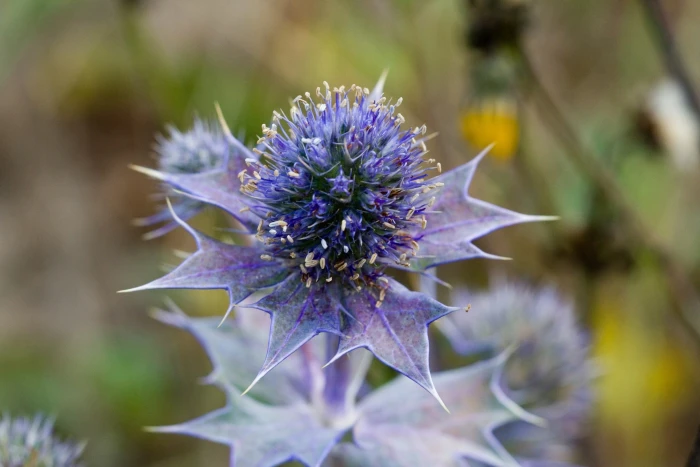Sea Holly
(Eryngium maritimum)
Sea Holly (Eryngium maritimum)
/
/

Svdmolen
CC BY 2.5
Image By:
Svdmolen
Recorded By:
Copyright:
CC BY 2.5
Copyright Notice:
Photo by: Svdmolen | License Type: CC BY 2.5 | License URL: https://creativecommons.org/licenses/by/2.5 | Uploader: Svdmolen | Publisher: Wikimedia Commons | Title: Eryngium_maritimum-01_(xndr).jpg | Notes: {{Information |Description=Erythrina falcata Benth., ornamental vernacular name: ceibo (crop image Erythrina falcata 6.jpg) |Source=self-made own work |Date=december 9, 2007 |Author= [[User:Penarc|Penarc]] |Permission= |other_versions=Image:erythrina falc |














































Estimated Native Range
Climate Requirements for Kansas City, Missouri
| This Plant | Your Site | Plant Suitability for Your Location | ||
|---|---|---|---|---|
| • Precipitation | 8" - 180" | 40" | Aquatic | Aquatic |
| • High Temp. | -43°F - 99°F | 91°F | Your summer temperatures are normal for this plant. | Excellent |
| • Low Temp. | -71°F - 70°F | 19°F | Your winter temperatures are normal for this plant | Excellent |
This plant may not grow well at your location - your precipitation is too high.
Summary
Eryngium maritimum, commonly known as Sea Holly, is a semi-deciduous perennial herb native to coastal areas, including sandy beaches and dunes, across Southern Europe, Western Asia, and Northern Africa. It typically grows to a height of 20 to 60 cm and features a distinctive appearance with spiny-toothed leaves and a cone-shaped inflorescence of metallic blue flowers, which bloom in the summer and are highly attractive to bees and butterflies. The plant’s overall form is somewhat thistle-like, but it is notable for its striking blue flowers. Sea Holly is valued for its unique texture, color, and ability to thrive in poor, sandy soils.
Sea Holly is often used in rock gardens, coastal plantings, and as a striking accent in borders due to its tolerance of salt and drought. Its architectural form and blue flowers make it a standout in the garden. It requires minimal maintenance once established, preferring full sun and well-drained soils. While it is not a common culinary herb, it has historical significance as an aphrodisiac in Elizabethan England. Gardeners should be aware that while it is not aggressive, its taproot makes it difficult to transplant once established.CC BY-SA 4.0
Sea Holly is often used in rock gardens, coastal plantings, and as a striking accent in borders due to its tolerance of salt and drought. Its architectural form and blue flowers make it a standout in the garden. It requires minimal maintenance once established, preferring full sun and well-drained soils. While it is not a common culinary herb, it has historical significance as an aphrodisiac in Elizabethan England. Gardeners should be aware that while it is not aggressive, its taproot makes it difficult to transplant once established.CC BY-SA 4.0
Plant Description
- Plant Type: Herb
- Height: 2-3 feet
- Width: 2-3 feet
- Growth Rate: Moderate
- Flower Color: Blue
- Flowering Season: Summer, Fall
- Leaf Retention: Semi-Deciduous
Growth Requirements
- Sun: Full Sun
- Water: Low
- Drainage: Fast
Common Uses
Bee Garden, Bird Garden, Border Plant, Butterfly Garden, Deer Resistant, Drought Tolerant, Edible*Disclaimer: Easyscape's listed plant edibility is for informational use. Always verify the safety and proper identification of any plant before consumption., Erosion Control, Low Maintenance, Potted Plant, Rabbit Resistant, Rock Garden, Salt Tolerant
Natural Habitat
Native to coastal areas, including sandy beaches and dunes
Other Names
Common Names: Seaside Eryngo, Sea-Holly, Eryngo, Maritime Eryngo, Seaside Coyote-Thistle, Приморски Ветрогон, Celynnen Y Môr, See-Mannstreu, Stranddistel, Strandmannstreu
Scientific Names: Eryngium maritimum, Eryngium marinum
GBIF Accepted Name: Eryngium maritimum L.